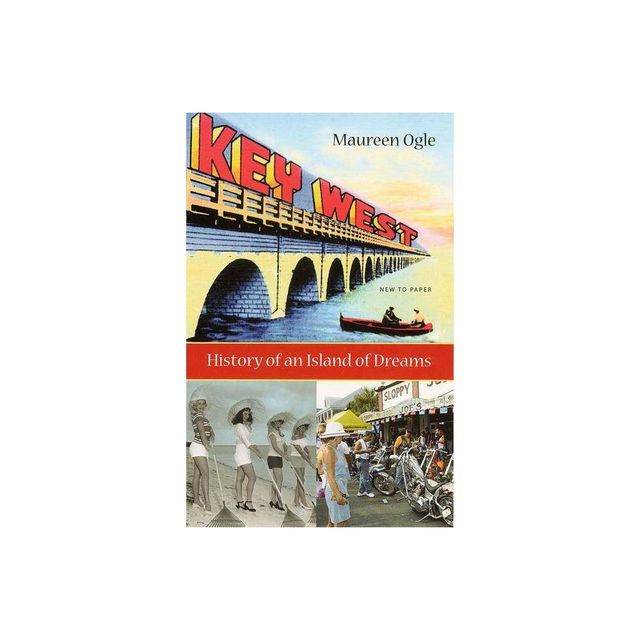Home
Key West on the Edge: Inventing Conch Republic
Loading Inventory...
Barnes and Noble
Key West on the Edge: Inventing Conch Republic
Current price: $28.00


Barnes and Noble
Key West on the Edge: Inventing Conch Republic
Current price: $28.00
Loading Inventory...
Size: Paperback
*Product Information may vary - to confirm product availability, pricing, and additional information please contact Barnes and Noble
How the unique island city came to be a major tourist destination
Florida Historical Society Charlton Tebeau Book Award
Key West lies at the southernmost point of the continental United States,
ninety miles from Cuba, at Mile Marker 0 on famed U.S. Highway 1. Famous for
six-toed cats in the Hemingway House, Sloppy Joe’s and Captain Tony's, Jimmy
Buffett songs, body paint parade "costumes," and a brief secession
from the Union after which the Conch Republic asked for $1 billion in foreign
aid, Key West also lies at the metaphorical edge of our sensibilities.
How
this unlikely city came to be a tourist mecca is the subject of Robert
Kerstein's intrepid new history. Sited on an island only four miles long and
two miles wide, Key West has been fishing village, salvage yard, U.S. Navy
base, cigar factory, hippie haven, gay enclave, cruise ship port-of-call, and
more. Duval Street, which stretches the length of one of the most unusual
cities in America, is today lined with brand-name shops that can be found in
any major shopping mall in America.
Leaving
no stone unturned, Kerstein reveals how Key West has changed dramatically over
the years while holding on to the uniqueness that continues to attract tourists
and new residents to the island.
Florida Historical Society Charlton Tebeau Book Award
Key West lies at the southernmost point of the continental United States,
ninety miles from Cuba, at Mile Marker 0 on famed U.S. Highway 1. Famous for
six-toed cats in the Hemingway House, Sloppy Joe’s and Captain Tony's, Jimmy
Buffett songs, body paint parade "costumes," and a brief secession
from the Union after which the Conch Republic asked for $1 billion in foreign
aid, Key West also lies at the metaphorical edge of our sensibilities.
How
this unlikely city came to be a tourist mecca is the subject of Robert
Kerstein's intrepid new history. Sited on an island only four miles long and
two miles wide, Key West has been fishing village, salvage yard, U.S. Navy
base, cigar factory, hippie haven, gay enclave, cruise ship port-of-call, and
more. Duval Street, which stretches the length of one of the most unusual
cities in America, is today lined with brand-name shops that can be found in
any major shopping mall in America.
Leaving
no stone unturned, Kerstein reveals how Key West has changed dramatically over
the years while holding on to the uniqueness that continues to attract tourists
and new residents to the island.


















